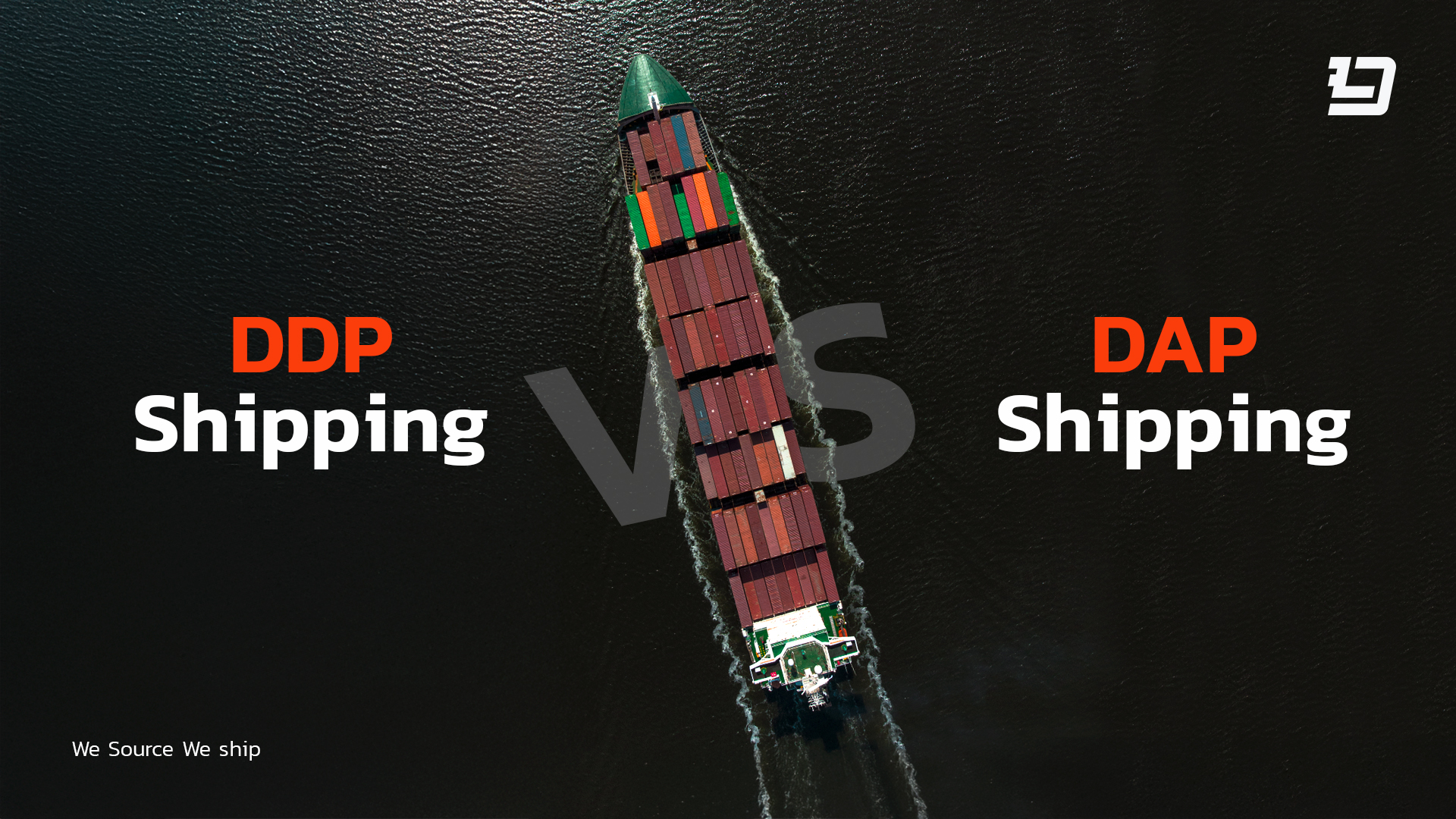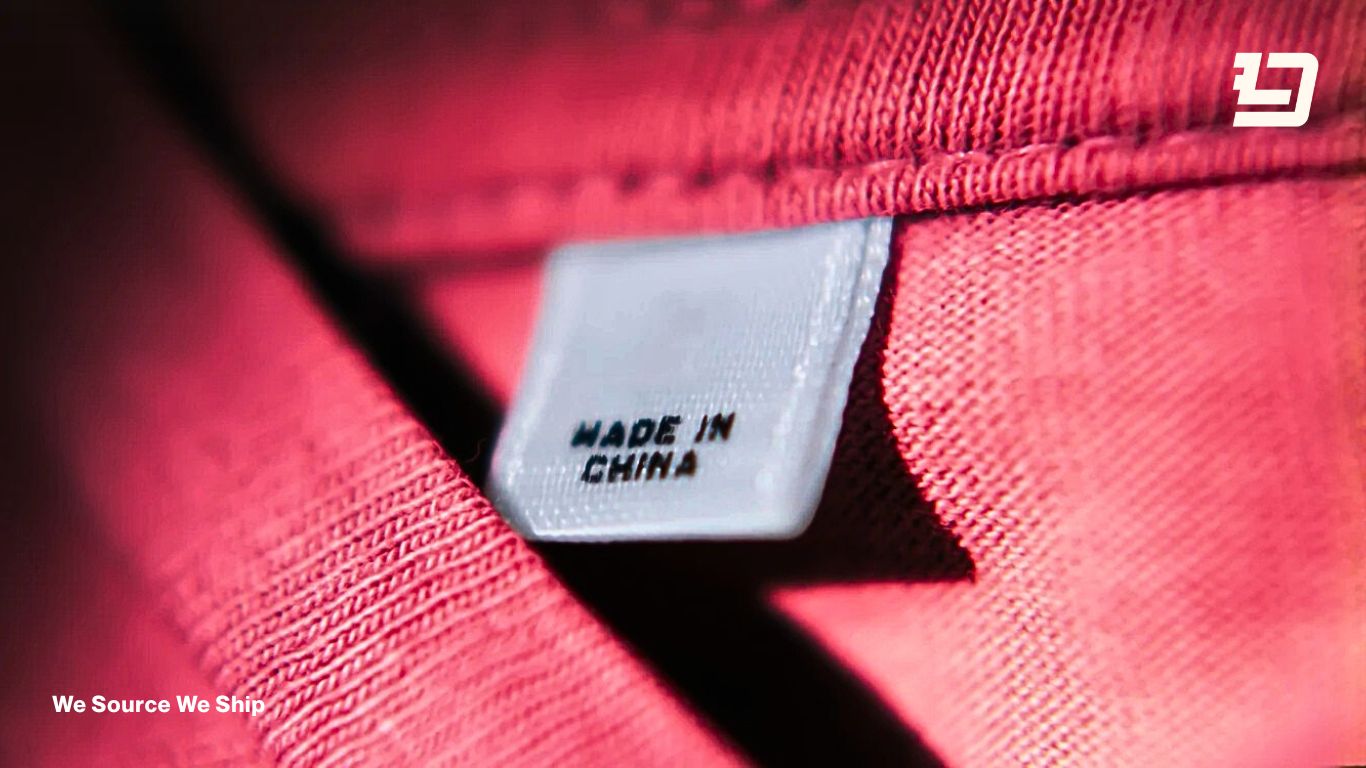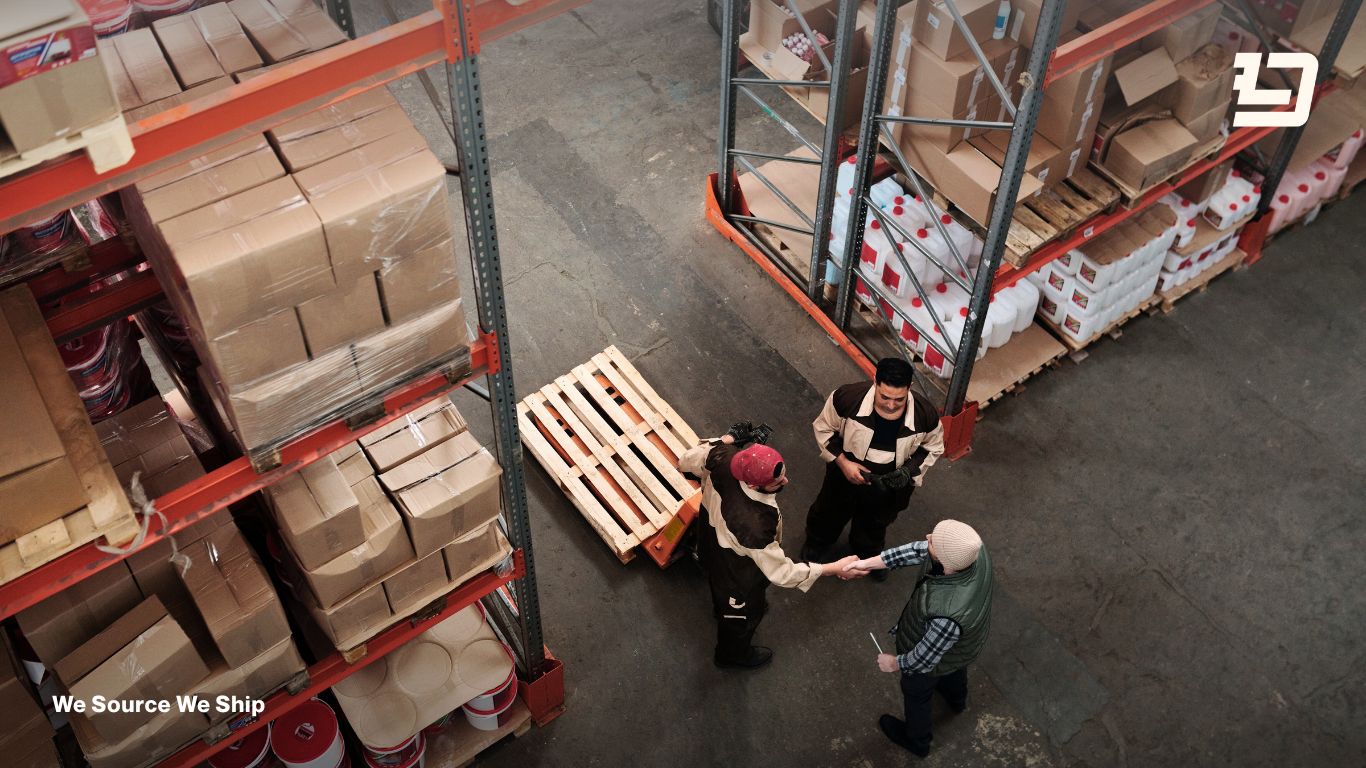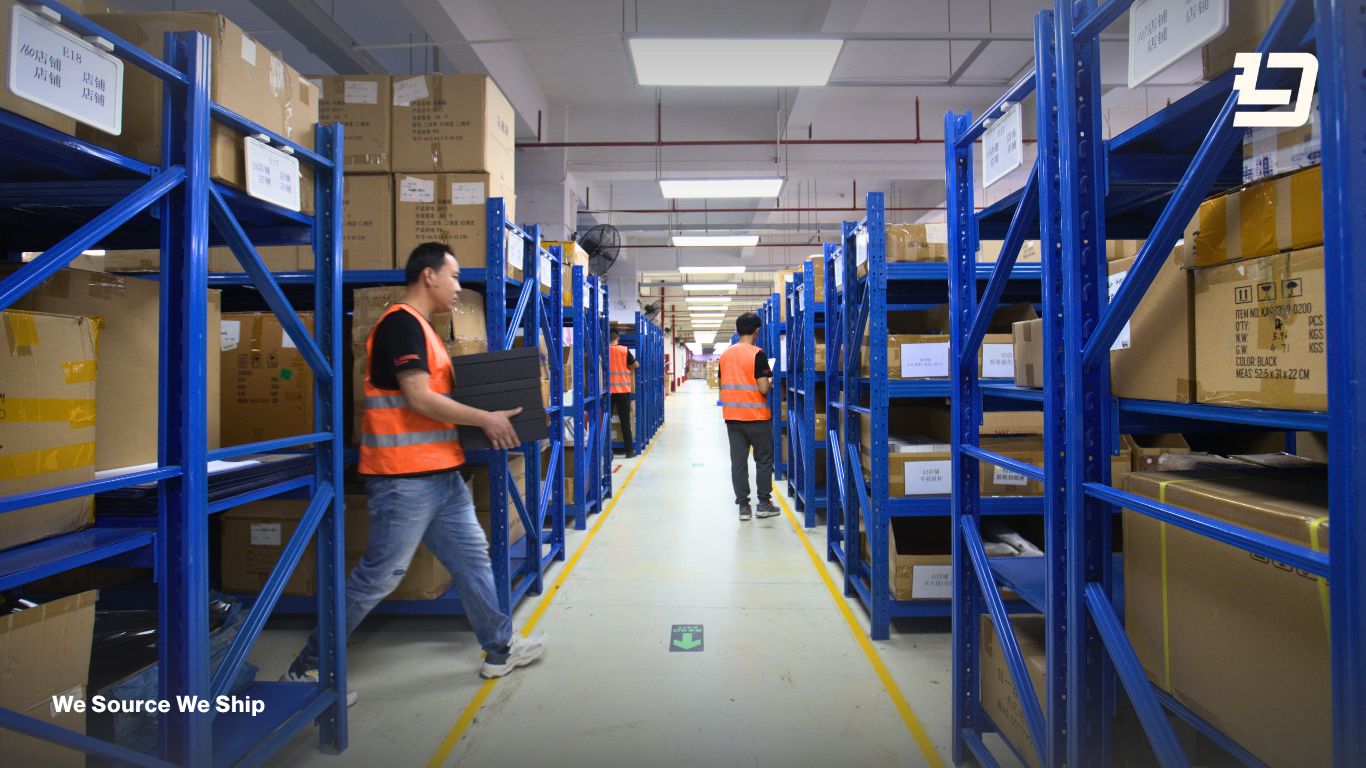As the eCommerce fulfillment industry keeps growing, international shipping is now more relevant than ever. To simplify communications in global trade, businesses use Incoterms (International Commercial Terms), a set of terms used to clarify the obligations of buyers and sellers regarding the transportation of goods.
Among the most popular Incoterms are DDP (Delivered Duty Paid) and DAP (Delivered At Place). So what is DDP and DAP shipping? And what’s the difference between them? Keep reading to find out.
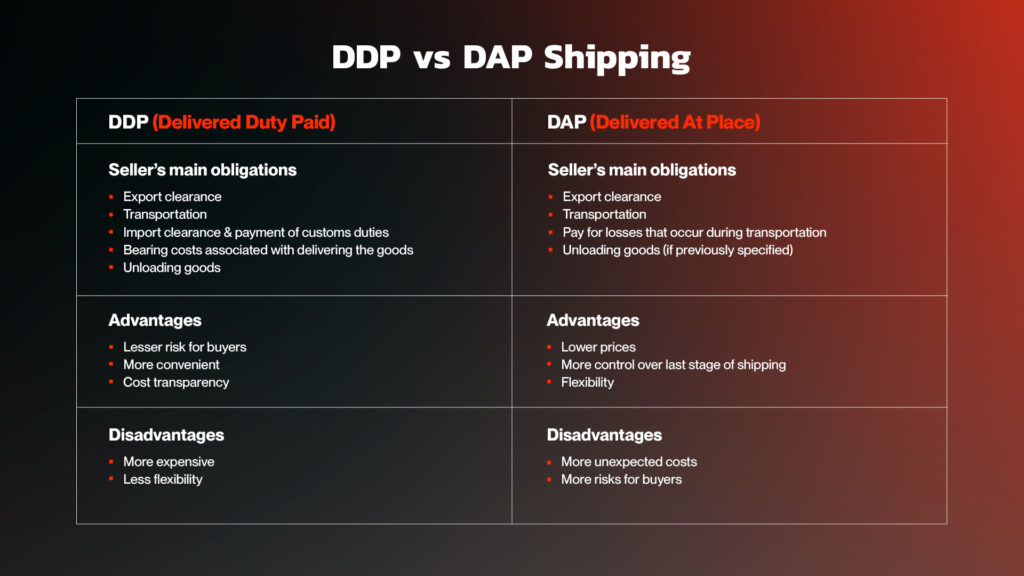
What is DDP (Delivered Duty Paid) shipping?
Delivered Duty Paid (DDP) shipping is a delivery agreement between buyers and sellers. Under this Incoterm agreement, the seller bears almost all the responsibility, cost, and associated risks of transporting goods to the buyer.
The responsibilities and costs include transportation, import and export customs and documentation, customs duties payment, insurance, and more. When shipping DDP, the buyer will not become responsible for the goods until they reach the agreed destination.
Seller’s main responsibilities with DDP shipping
When using the DDP shipping method, the seller is responsible for almost all the processes and costs related to the transportation of goods. The responsibilities are clearly defined in the Incoterms 2020 rules, which is the most recent version. This includes:
- Export clearance.
- Transporting the goods to the destination.
- Unloading goods at the destination.
- Import clearance and payment of customs duties.
- Bearing all risks and costs associated with delivering the goods.
Benefits of DDP shipping
Delivered Duty Paid shipping significantly reduces the risk to the buyer. This is especially crucial when shipping internationally, such as from the US to the UK or any other place. In addition, using this Incoterm shipping method provides more cost transparency for the buyer.
While the benefits of DDP shipping primarily support the buyer, the seller also gains an advantage. DDP can increase conversion rates, bring in more revenue, and leave the seller with full control of the process for better optimization.
Disadvantages of shipping DDP
The cons of Delivered Duty Paid shipping are more related to the seller. Given that most responsibilities are on the seller, there could be more unexpected costs along the way. This includes supply chain disruptions, customs delays, and short-notice regulatory changes. From the buyer’s side, DDP shipping can be more expensive as the risk is significantly reduced.
What is DAP (Delivered At Place) shipping?
DAP shipping is where the seller takes responsibility for costs and risks related to transporting the goods until they reach the destination, but does not include import duties and related charges. The buyer will be required to unload goods, arrange for customs clearance, and pay the necessary fees.
Seller’s main obligations with DAP shipping
With DAP shipping, sellers are still responsible for most of the process, cost, and risks related to transportation. In addition to documentation, licensing, and packaging, the seller under the DAP agreement is also responsible for:
- Export clearance documentation.
- Transport to the named destination.
- Pay for any losses that occur during the transportation.
- Unloading goods (only if previously specified).
Buyer’s main responsibilities with DAP shipping
The buyer carries some of the risks of bringing their shipment under the DAP agreement. The buyer would need to be responsible for:
- Paying the seller and specifying the destination.
- Handling import paperwork upon arrival.
- Cover import duties, taxes, and levies.
- Arrange the unloading of goods.
Benefits of using DAP Incoterm for shipping
With DAP Incoterm shipping, there are fewer risks to the seller, especially when it comes to import clearance and paying related duties and taxes. This could lead to lower upfront costs for the seller.
From the buyer’s perspective, DAP delivery would be cheaper as there are no additional costs. In addition, the buyer would be able to control the last stage of the shipping process after unloading, giving them more control over the process.
Disadvantages of DAP shipping
The advantages of DAP shipping for sellers include less control over the process and fewer services offered, which could also lead to less revenue. In contrast, the disadvantages for buyers are more related to the increased risk as they’ll be responsible for import clearance and other related charges.
DDP shipping vs DAP shipping: Which Incoterm is best?
Both DDP and DAP are used for different trade purposes. Deciding which is the best Incoterm shipping method depends on your business needs.
Delivered Duty Paid (DDP) shipping is more beneficial for buyers who cannot afford to take on risks related to import clearance, especially new eCommerce businesses. However, if you’re more experienced in dealing with customs in the country of destination, then you may save more by opting for Delivered At Place (DAP) shipping.
Let experts handle Incoterms while you focus on what matters
Ecommerce sellers have a lot on their plate. Shipping, sourcing, customer inquiries, maintaining inventory levels, handling refunds… The list goes on.
While it’s important to learn Incoterm like DDP and DAP, letting experienced professionals handle shipping is the ideal option.
At Lansil Global, we work with local and international eCommerce brands to help them navigate fulfillment, freight shipping, sourcing, and more. If you’re looking to expand globally or want a second opinion on how to streamline your supply chain, we’re here to help!
Reach out to Lansil Global today for a free consultation.


